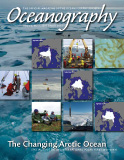Article Abstract
Along with the dramatic decrease in global geomagnetic field intensity, recent observations demonstrate that the geomagnetic field in the Arctic has dramatically changed over the last century. This change is best illustrated by the recent migration of the North Magnetic Pole (which has been in the Canadian Arctic for the last 400 years) into the Arctic Ocean. Because historical records are short, paleomagnetic studies are needed to put these recent Arctic geomagnetic changes into a proper temporal context. This paper presents an overview of Arctic geomagnetism, paleomagnetism, and recent efforts to move our understanding forward by looking at recent or emerging high-resolution Holocene records from the Low and the High Arctic. These paleomagnetic records attest to the unique nature of the geomagnetic field in the High Arctic. They also highlight how the Arctic, and especially the High Arctic, is a unique vantage point for studying geodynamo processes associated with the tangent cylinder model of convective flow within Earth’s core that could lead to differences in the behavior of the geomagnetic field observed at Earth’s surface, and possible relationships to paleomagnetic secular variations at mid-latitudes.

